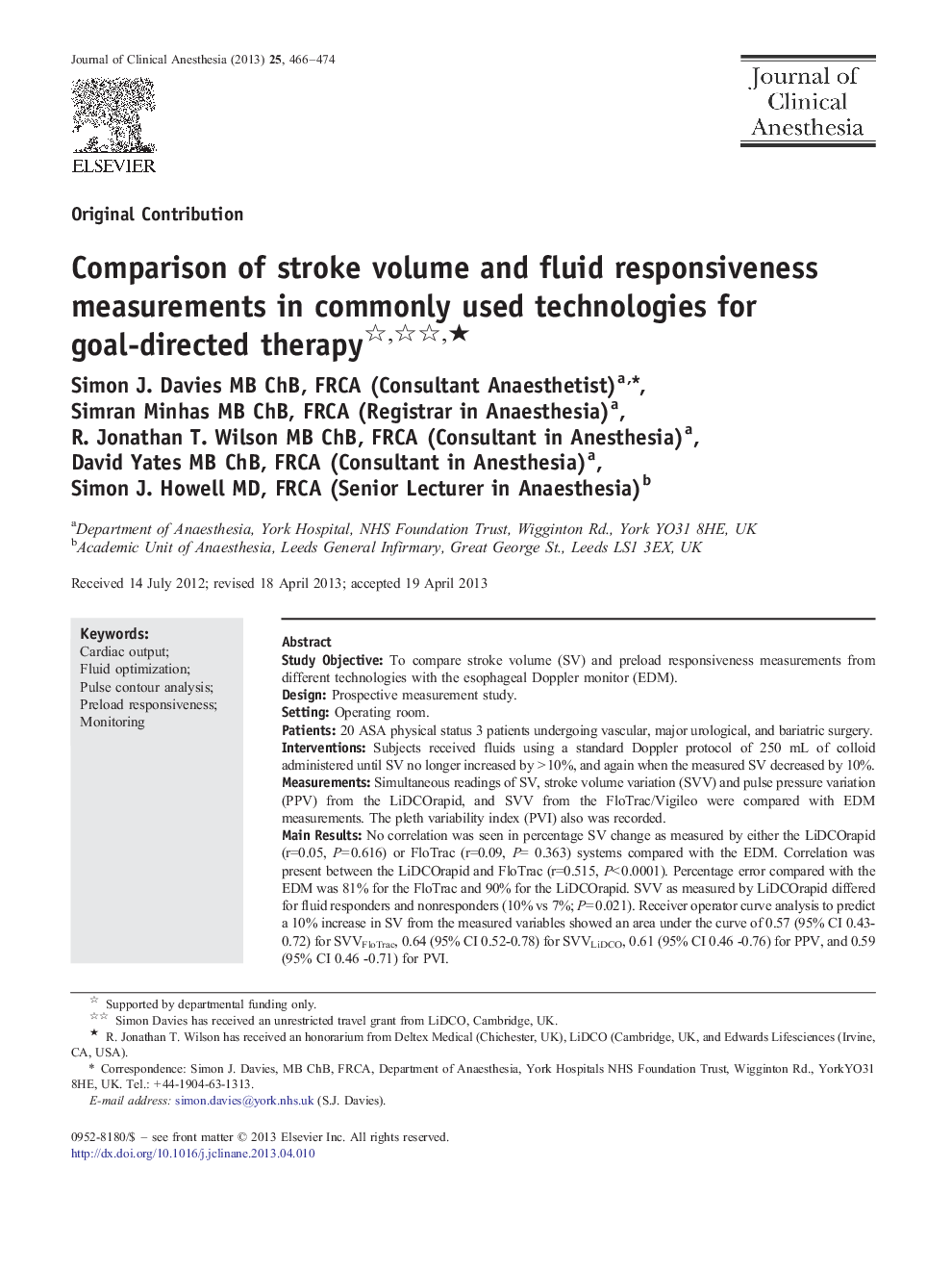| Article ID | Journal | Published Year | Pages | File Type |
|---|---|---|---|---|
| 2762749 | Journal of Clinical Anesthesia | 2013 | 9 Pages |
Study ObjectiveTo compare stroke volume (SV) and preload responsiveness measurements from different technologies with the esophageal Doppler monitor (EDM).DesignProspective measurement study.SettingOperating room.Patients20 ASA physical status 3 patients undergoing vascular, major urological, and bariatric surgery.InterventionsSubjects received fluids using a standard Doppler protocol of 250 mL of colloid administered until SV no longer increased by > 10%, and again when the measured SV decreased by 10%.MeasurementsSimultaneous readings of SV, stroke volume variation (SVV) and pulse pressure variation (PPV) from the LiDCOrapid, and SVV from the FloTrac/Vigileo were compared with EDM measurements. The pleth variability index (PVI) also was recorded.Main ResultsNo correlation was seen in percentage SV change as measured by either the LiDCOrapid (r=0.05, P= 0.616) or FloTrac (r=0.09, P= 0.363) systems compared with the EDM. Correlation was present between the LiDCOrapid and FloTrac (r=0.515, P< 0.0001). Percentage error compared with the EDM was 81% for the FloTrac and 90% for the LiDCOrapid. SVV as measured by LiDCOrapid differed for fluid responders and nonresponders (10% vs 7%; P= 0.021). Receiver operator curve analysis to predict a 10% increase in SV from the measured variables showed an area under the curve of 0.57 (95% CI 0.43-0.72) for SVVFloTrac, 0.64 (95% CI 0.52-0.78) for SVVLiDCO, 0.61 (95% CI 0.46 -0.76) for PPV, and 0.59 (95% CI 0.46 -0.71) for PVI.ConclusionsStroke volume as measured by the FloTrac and LiDCOrapid systems does not correlate with the esphageal Doppler, has poor concordance, and a clinically unacceptable percentage error. The predictive value of the fluid responsiveness parameters is low, with only SVV measured by the LiDCOrapid having clinical utility.
